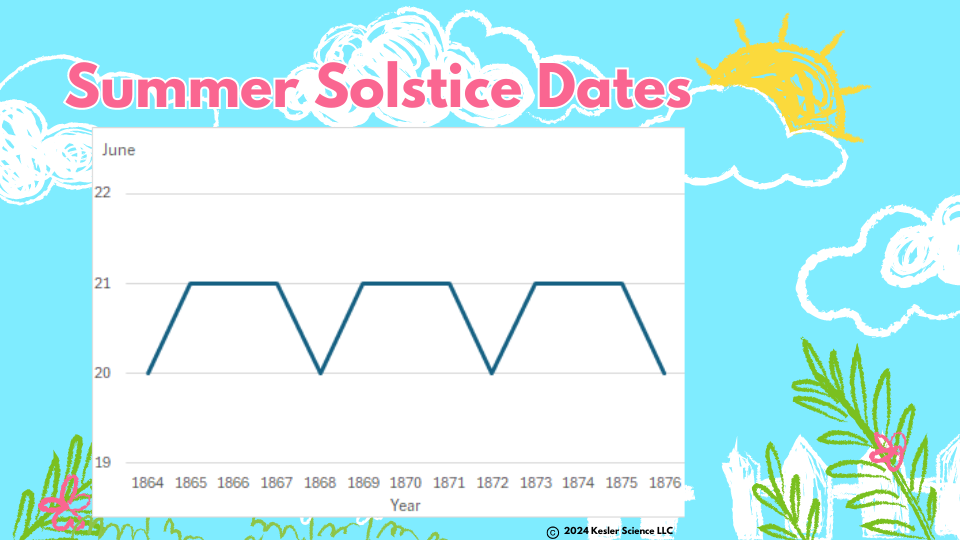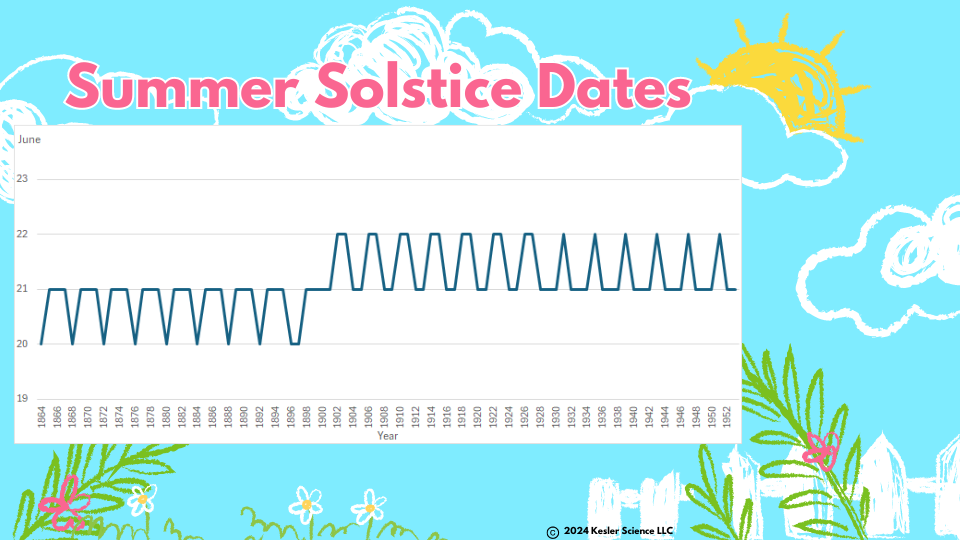Leap Years and the Summer Solstice - Kesler Science Weekly Phenomenon and Graph
You know our journey around the Sun actually takes a smidge more than the neat 365 days we mark on our calendars. To keep everything in sync, scientists as far back as Julius Caesar's time (!) have been adding an extra day to the calendar every few years.
This isn't a perfect solution, though. Way back in 1582, scientists noticed that adding a leap day EVERY four years would add 44 minutes per cycle!
To keep our seasons from drifting around the calendar, we skip the leap year for every century mark that isn't a multiple of 400. Years like 1700 or 2100, despite being every fourth year, don't get that extra day.
If you're looking to incorporate this phenomenon into your classroom, you could have students write a creative scientific narrative of what life would be like if we didn't use leap years. Hint: in 700 years, the Northern Hemisphere would experience summer in December! 🤯
One way to see this effect is to look at the pattern of the summer solstice dates:

Every four years, the date shifts back a day... then drifts over the next three.
Check out what happens when there is no leap year, like in 1900!

Now the summer solstice cycle is a whole day later!
This is a great way to show your class patterns of the Sun and Earth, and the effects of the leap year on the way we mark our seasons. (If you keep looking into it, you'll find it gets even weirder every 400 years😲.)
Here are some questions I'd ask my students if I brought this graph into my class:
💡According to the top graph, during which years did the summer solstice fall on June 20th?
💡What change happened to the summer solstice day in the year 1900?
💡Looking at the bottom graph, what pattern do you observe from the years 1902 to 1952?



